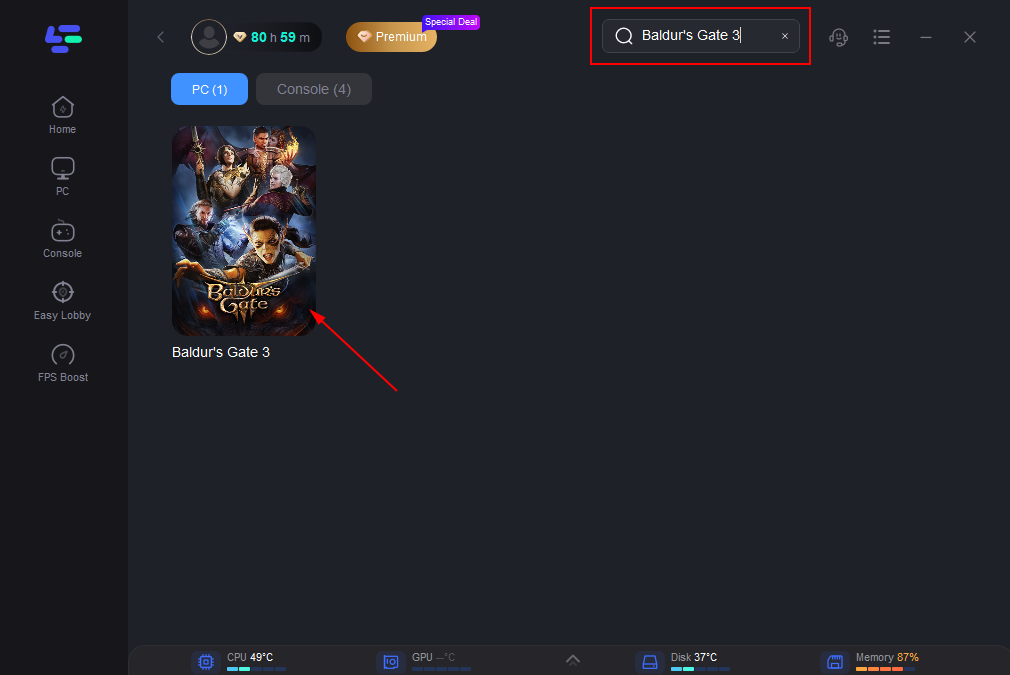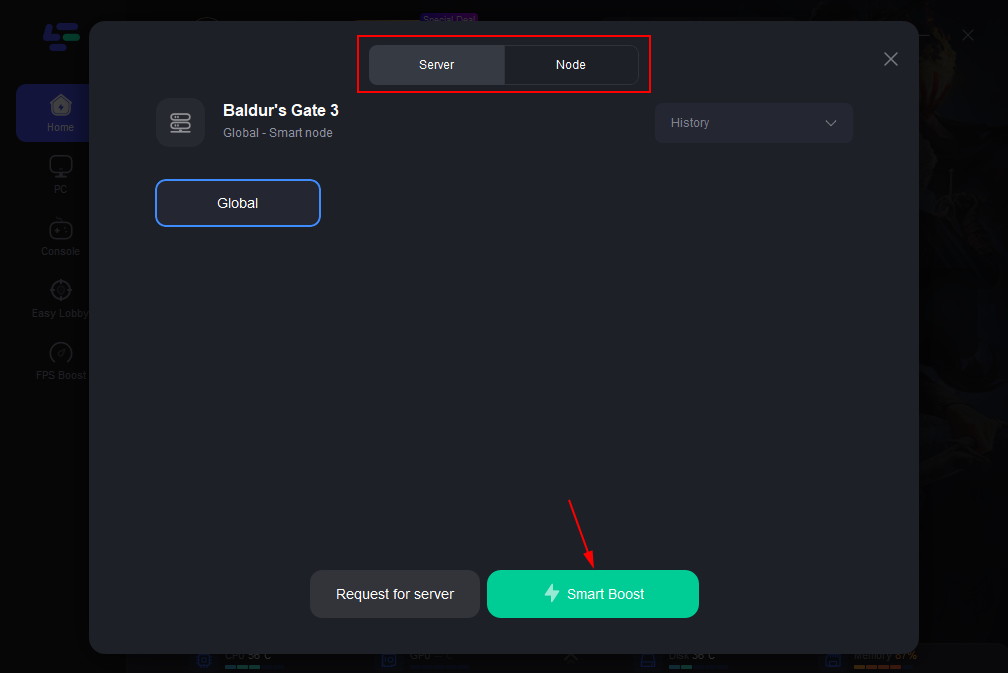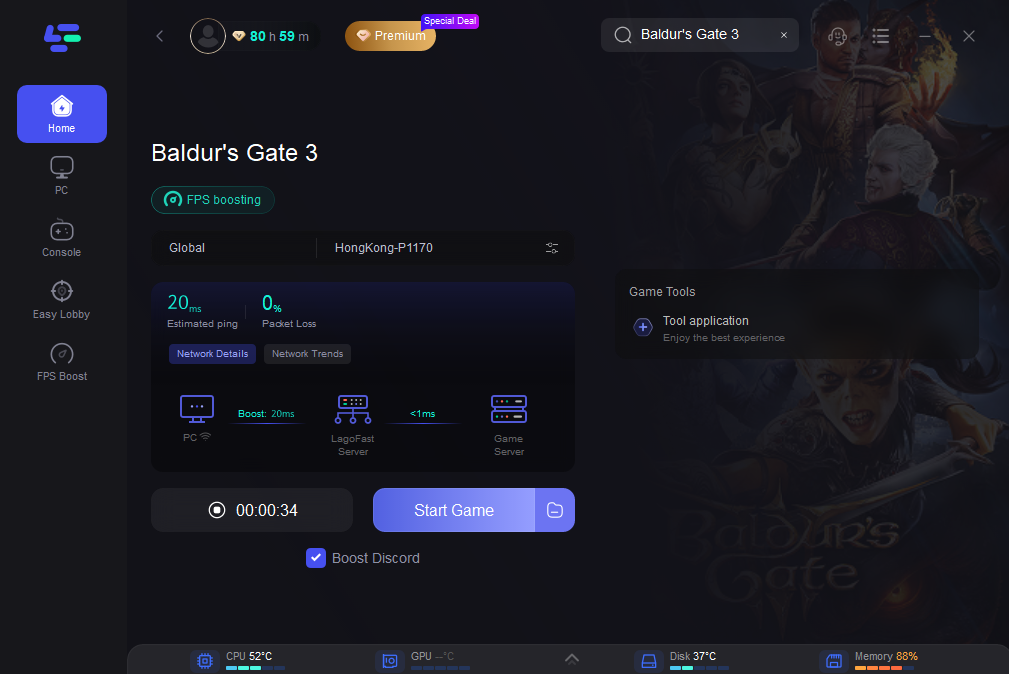
Baldur’s Gate 3 is a highly anticipated role-playing video game developed by Larian Studios. Set in the Dungeons & Dragons universe, it follows the events of the previous Baldur's Gate games. Players embark on a perilous journey filled with adventure, exploration, and strategic combat. With a rich narrative, immersive gameplay, and stunning visuals, Baldur’s Gate 3 promises to deliver an unforgettable experience for fans of the series and newcomers alike.
Baldur’s Gate 3 offers an immersive role-playing experience set in the rich world of Dungeons & Dragons. However, many players encounter frustrating low FPS issues while exploring its vast landscapes and engaging in intense battles. This article aims to provide solutions to optimize your gameplay experience. By addressing common causes of low FPS and implementing effective strategies, you can enjoy Baldur’s Gate 3 to its fullest potential.
Part 1: Identifying Causes of Low FPS in Baldur’s Gate 3
Part 2: How to Quickly Boost Baldur’s Gate 3 Low FPS?
Part 3: Another Way to Fix Baldur’s Gate 3 Low FPS
Part 1: Identifying Causes of Low FPS in Baldur’s Gate 3
The low FPS issue in Baldur’s Gate 3 can be attributed to several factors:
1. Outdated graphics card drivers hinder optimization. Updating drivers is crucial for performance enhancements and BG3 optimization.
2. CPU or GPU overheating and thermal throttling occur due to BG3's intensive demands, leading to automatic throttling and reduced FPS. Improved cooling solutions are essential.
3. Insufficient RAM can lead to memory bottlenecks, stuttering, and thrashing as BG3 requires a minimum of 16GB RAM.
4. Background applications consuming resources affect FPS. Closing unnecessary programs can free up CPU, RAM, and GPU resources.
5. Certain graphics settings, such as ultra textures, shadows, and effects, may be too demanding for the GPU, causing FPS to drop.
6. Playing at higher resolutions like 4K can overwhelm hardware, requiring the GPU to work harder and resulting in lower FPS. Lower resolutions can improve FPS.
7. Hardware not meeting minimum or recommended specifications, such as a GTX 1070 GPU, 16GB RAM, and quad-core CPU, necessitates upgrading to improve performance.
Part 2: How to Quickly Boost Baldur’s Gate 3 Low FPS?
When tackling low FPS issues in Baldur’s Gate 3, here is a quick fix to consider:
Utilize a VPN, like LagoFast. Virtual Private Networks (VPNs) have the capability to enhance network connections, minimize latency, and bolster network reliability, resulting in an improved gaming experience with higher FPS. Platforms such as LagoFast streamline the transmission of game data, contributing to smoother gameplay. By utilizing VPNs, players can circumvent congested or ineffective pathways, ultimately leading to enhanced FPS during gameplay.
To enjoy a better gaming experience, follow these four steps to have a free trial of LagoFast:
Step 1: Download and install LagoFast
Step 2: Input “Baldur's Gate 3” and click the result.
Step 3: Choose the server and node you like.
Step 4: Click boost, and it will show you real-time ping & packet loss rate.
Part 3: Another Way to Fix Baldur’s Gate 3 Low FPS
Upgrade Graphics Drivers
Updating your graphics drivers could resolve low FPS issues in Baldur’s Gate 3. Outdated or incompatible graphics drivers can cause poor performance and decreased FPS in games. Game developers frequently release updates and optimizations that rely on the latest drivers for smooth operation. To ensure compatibility with the game’s requirements and access performance enhancements, install the most recent drivers provided by your GPU manufacturer (NVIDIA, AMD, Intel)
Updating graphics drivers can vary depending on your operating system and GPU manufacturer (NVIDIA, AMD, or Intel). Here are the general steps:
1. Identify Your Graphics Card:
On Windows: Right-click the Start button, choose “Device Manager,” and expand the “Display adapters” category to locate your graphics card model.
2. Visit the GPU Manufacturer’s Website:
- For NVIDIA: Visit www.nvidia.com.
- For AMD: Visit www.amd.com.
- For Intel: Visit www.intel.com.
3. Download the Latest Drivers:
Navigate to the “Drivers & Support” or “Support & Downloads” section on the website to find suitable drivers for your graphics card and operating system.
4. Install the Drivers:
On Windows: Run the installer after downloading the driver and follow on-screen instructions. Restart your computer if prompted.
5. Verify Driver Update:
Check “Device Manager” to confirm that your graphics card entry displays the updated driver version.
6. Optional: Use GPU Manufacturer’s Software (NVIDIA GeForce Experience / AMD Radeon Software):
- NVIDIA users can install “GeForce Experience” for automatic driver updates and game settings optimization.
- AMD users can install “Radeon Software” for similar features.
7. Restart Your Computer:
A restart may be necessary to complete the driver update process and ensure the changes are applied.
Conclusion
In conclusion, addressing low FPS issues in Baldur's Gate 3 requires a multi-faceted approach. Updating graphics drivers, and optimizing network connections through VPNs like LagoFast are effective strategies. But we still recommend you to use LagoFast first as it is proved to be useful!

Boost Your Game with LagoFast for Epic Speed
Play harder, faster. LagoFast game booster eliminates stutter and lags on PC, mobile, or Mac—win every match!
Quickly Reduce Game Lag and Ping!
Boost FPS for Smoother Gameplay!




